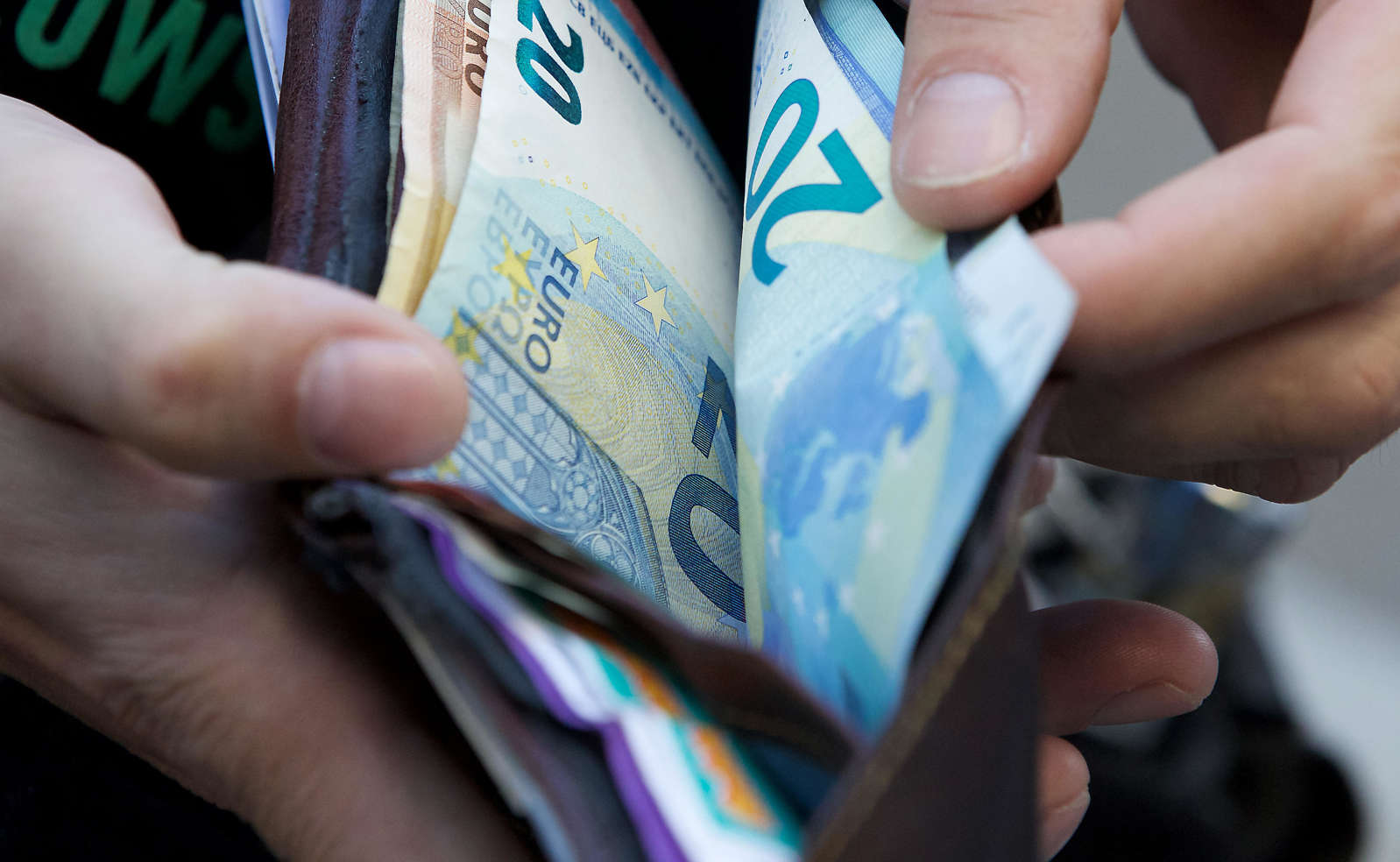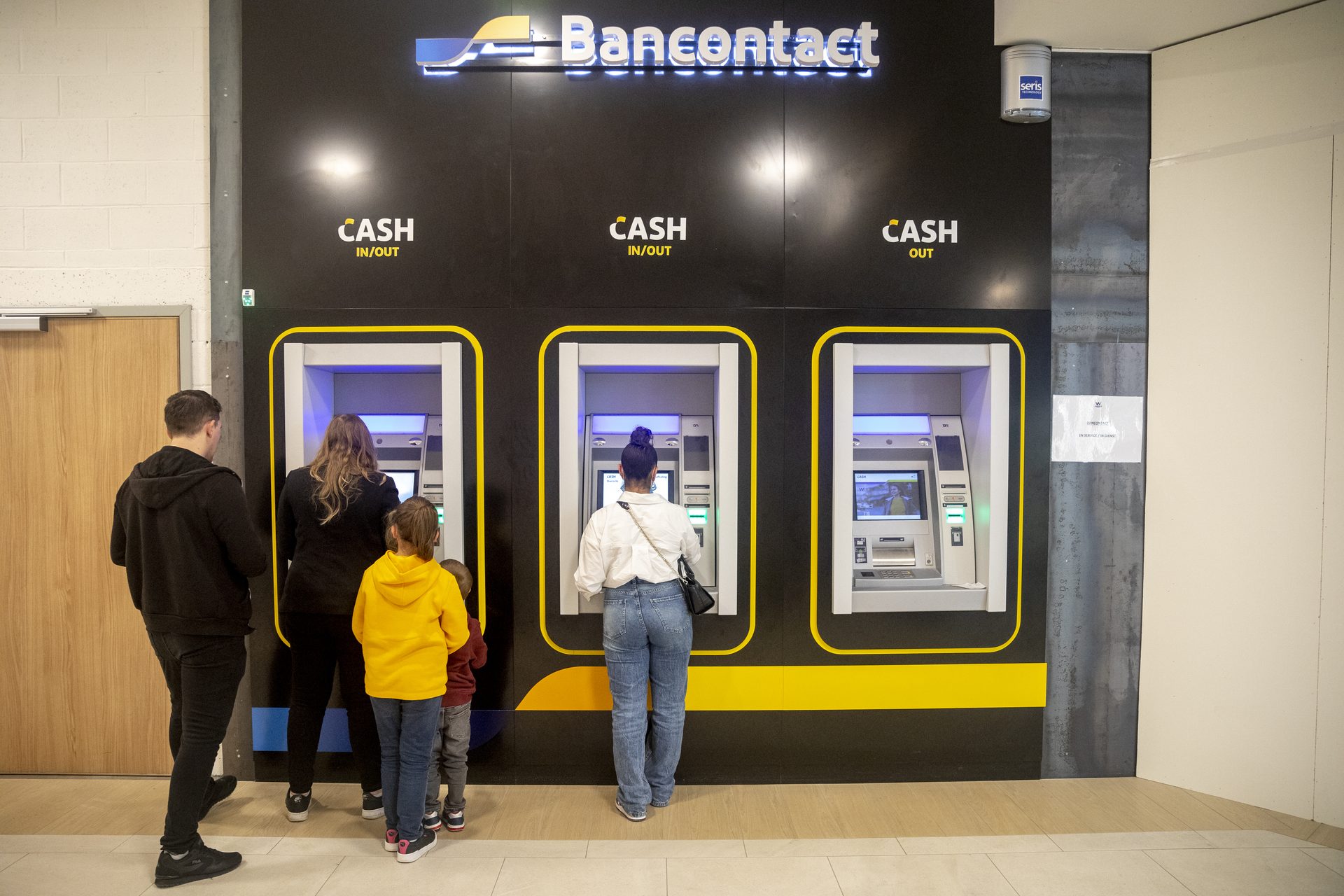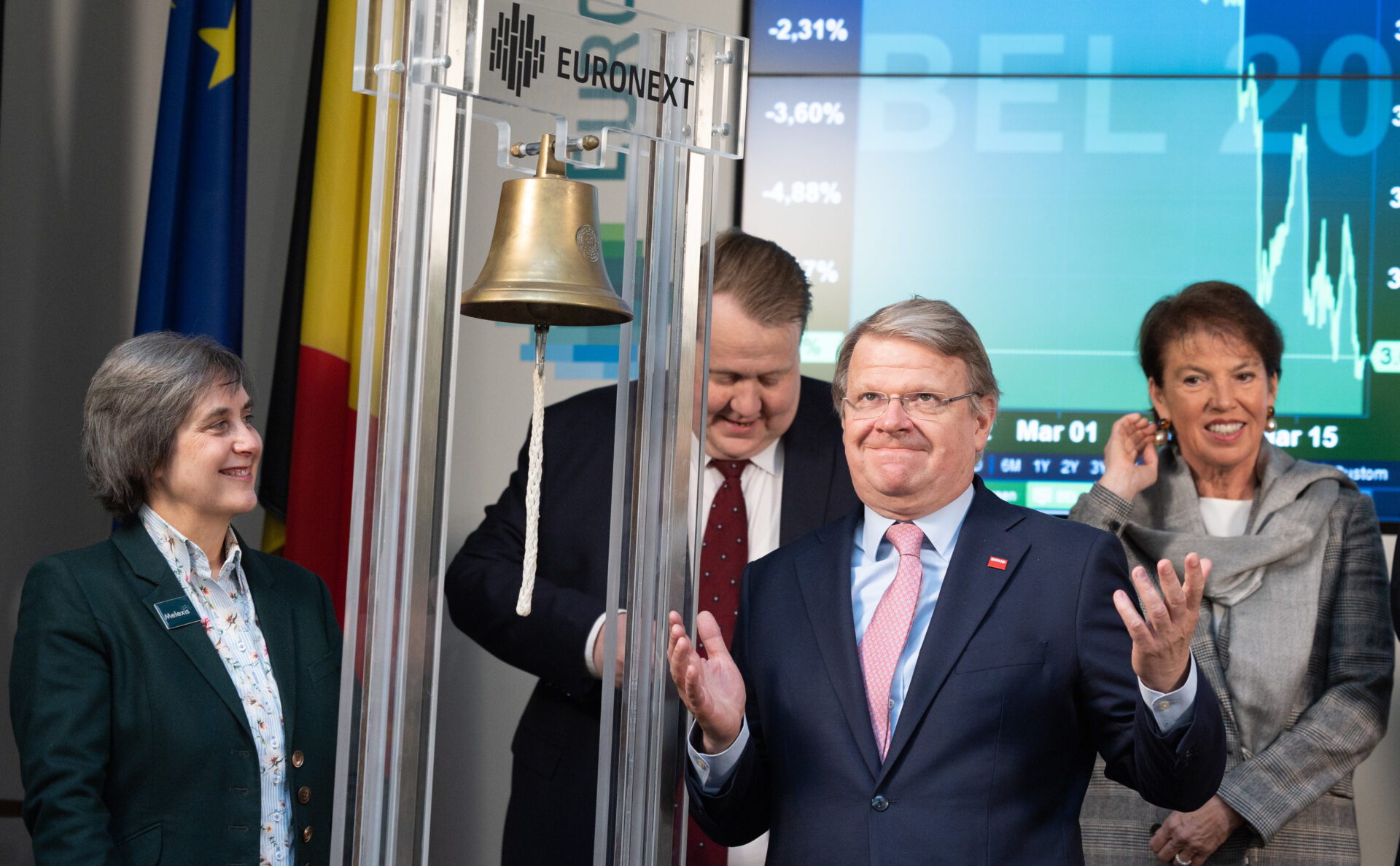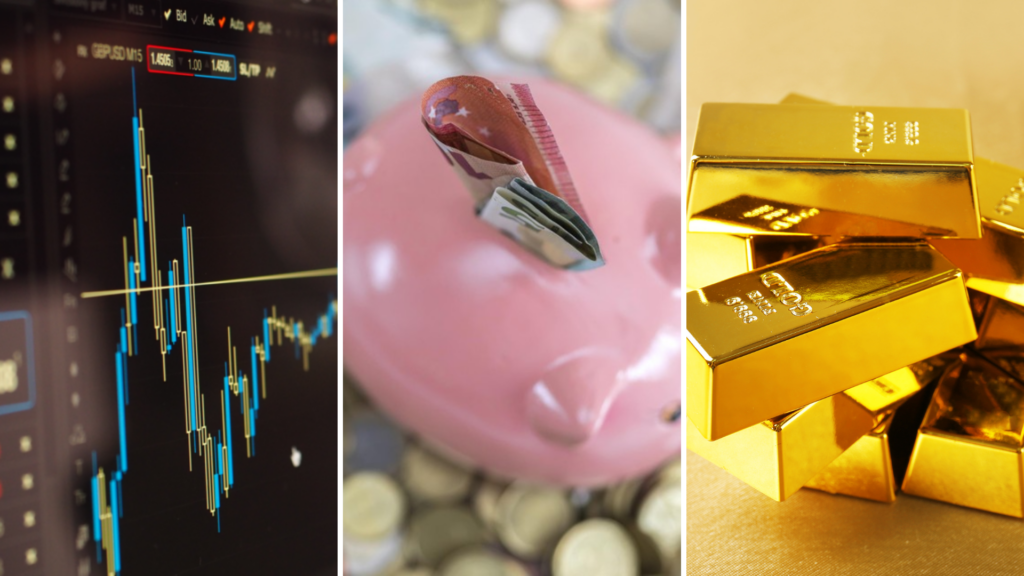A new year often brings new resolutions to save more money. But what are the best options available to people living in Belgium?
Belgian residents have more than €25,000 in savings, on average. However, savings rates are much lower than in most other eurozone countries. People are therefore increasingly considering alternative options.
Not sure what to do with your spare cash or savings? Consumer protection organisation Test Achats has shared ten options with The Brussels Times. "These are ranked from the least risky with the lowest return, to riskier and potentially higher – but also more uncertain – returns," spokesperson Laura Clays said.
1. Savings accounts
This is a risk-free product, as savings are guaranteed up to €100,000 per person and per bank if the bank cannot repay clients, for instance in case of bankruptcy.
The downside? Returns are often low. "At big banks, main savings accounts yield between 0.30% and 1.10% a year [advertised rates are divided into a base rate and loyalty premium]. This is a return well below inflation," Clays said.

Credit: Belga
Some banks offer a second, more generous, but less accessible savings account. These currently offer between 1.5% and 2%. But this rate depends entirely on the loyalty premium, granted after 12 months. This rate is guaranteed for 12 months, but the base rate can be reduced at any time.
Small online banks are best for savings accounts, offering higher returns without conditions such as a limited monthly deposit. For example: NIBC Fidelity Account offers a 0.85% base rate and a 1.60% fidelity premium. Those regularly withdrawing money should choose a savings account with a high base interest rate.
2. State bonds
The Belgian State can issue new state notes every three months. People buying bonds lend their money to the Belgian Government for an agreed number of years. In exchange, the State pays lenders an agreed amount of interest, in addition to repaying the initial loan.
The next campaign will be in March, but the return on this investment will only be announced a few days before the buying period starts. The last state bonds issued in December 2024 included a one-year bond (a gross yield of 2.2%, or 1.54% after deducting withholding tax), and an eight-year one (2.8% or 1.96% after taxes).
State bonds are reasonably risk-free because they are backed by the State. "The chance of the Belgian State going bankrupt is zero. But people should take into account how long they can spare the money for," Clays said. Selling before maturity is possible but involves lower returns.
3. Cash notes or term accounts
Here, money is lent to the bank instead of the State. This option is also risk-free: savings are guaranteed up to €100,000 (per person/per bank) if the bank can no longer repay the savers.
"The advantage is that the interest rate is fixed, which is positive if market rates fall," Clays said. "But this becomes a disadvantage if they rise. You are then stuck with a product with a low interest rate and you cannot get out."

Credit: Belga / Hatim Kaghat
The money is also tied up until the maturity date. Withdrawing money early is sometimes possible, but comes with financial penalties.
"Since not all banks disclose their rates, we advise customers to inquire about the rates they offer and negotiate the rate if they have a large amount to invest," Clays said.
4. Another country's government bond
Buying government bonds from other countries is also possible. This is done through the so-called secondary bond market, where bonds are traded during their lifetime.
"The advantage is that they can offer slightly more than cash bonds, for the same level of risk (i.e. virtually no risk unless you think a government might go bankrupt)," Clays said. The downside is more research needs to be done. Some intermediaries also charge hefty fees.
5. Corporate bonds
A similar principle to a government bond, but the money is lent to a company. "So you should choose companies that are in good financial health, and able to repay the bond at maturity," Clays said. Given the (slightly) higher risk, the return is also higher.
The downside is that the number of transactions can be low, making it difficult to buy at a good price. Because they are riskier, it is not advised to invest more than 5% of your portfolio in one issuer. Again, people must do their research and calculate the return based on the purchase price, which varies constantly. Higher fees are another disadvantage.
6. Crowdfunding
This involves entrusting money to a small company via a platform (Look&Fin or BeeBonds are well-known Belgian examples). The principle is broadly the same as for bonds, but on a smaller scale. Generally, loans have terms between one and five years.
There are two types of loans:
- Unsecured loans: the risk lies entirely with the borrower and their ability to meet obligations. The return often varies between 7-11% gross. This is quite risky, so it is advised to only invest a small part of your savings.
- Insured loans: if the borrower cannot repay, an insurer takes over. This is safer, even if it does not equal the €100,000 deposit guarantee available for bank accounts. The yield here varies between 5-7% gross.
New loans are offered regularly. "The downside is that, if you have a large amount to invest, you have to wait a few months before you can invest it all. As repayments are monthly, you need to think regularly about reinvesting the released amounts."
7. High-yield accounts
When investing in the stock market through certain brokers, people make an additional account to keep money that is waiting to be invested. Some brokers have started offering interest on this money.
German broker Trade Republic has the best offer, with a gross interest rate of 3.75% up to €50,000. Interest is paid monthly and money can be withdrawn at any time. Savings are also covered up to €100,000 per person. However, the interest rate is not guaranteed.
"As it is German, this investment must be declared to the National Bank and reported in your tax return every year, including the interest earned." The gross rate of 4% is therefore a net rate of 2.62%. "But this is still attractive."
8. Branch 21 savings insurance
Branch 21 is a life insurance policy with a term of at least eight years. The return consists of a guaranteed return and a profit part (depending on the insurer's results). The latter part is not known in advance and is not guaranteed.
A guaranteed interest rate of between 2% and 2.6% for eight years is currently offered. "But be careful: many products come with high fees. The initial cost can be as high as 3% or more. 2% tax is added to that on each new payment, lowering the return."
Exit fees and taxes may also be charged. "This investment should only be considered for a term of eight years, as 30% withholding tax is deducted before. And you should check that the costs do not weigh too heavily on the return."
9. Investing in stock markets
All previous options discussed are risk-averse investments, with returns barely higher than expected inflation. "If you have the time (at least 10 to 15 years), consider investing in equities," Clays said. "Keep a buffer in your savings account of three to six months' salary, and a little more if you have a project (e.g., big holiday, new car)."
However, there is a real risk of a (significant) short-term decline, as the stock market fluctuates constantly. But in the long term, the downside risk is considerably lower, so there are good return prospects: between 5-7% per year, on average. This makes it the best way to protect savings from inflation.

CEOs ring the bell during the bell ceremony of the Euronext Brussels Stock Exchange. Credit: Belga / Benoit Doppagne
This option is only successful when properly diversifying investments. A mixed mutual fund – entrusting money to a fund manager who invests it in stocks and bonds – is the best option. "You don't have to keep an eye on your portfolio, except to check it is doing well from time to time," Clays said. Most banks offer such funds.
Another method is to buy two ETFs (Exchange Traded Funds), which cost less than banks' funds. The idea is to buy one ETF in equities and the other in bonds (50-50). Some brokers, such as DeGiro, offer them at a very low cost. "This is more effective but requires you to leave your comfort zone."
10. Gold and cryptocurrencies
These two investments, of which prices have risen sharply, are of interest to investors. "What they have in common is that they do not pay a coupon or dividend. So the return is the potential capital gain," Clays said.
Although gold is often seen as a safe haven, even during turbulent times, it is not without risk. "In the past, the price has fallen by 10-20%. Therefore, it should be reserved for a small part of the portfolio."
Cryptocurrencies are even riskier. "Again, only invest a very small part of your savings in cryptocurrencies, so if you lose it, it will not affect you dramatically."

